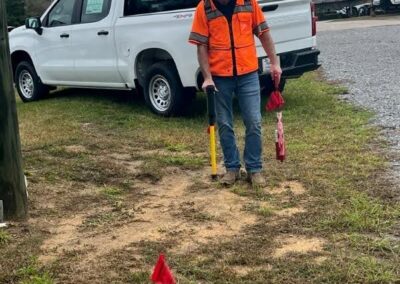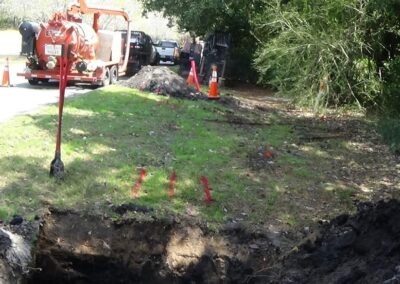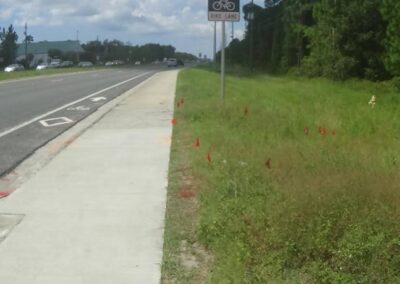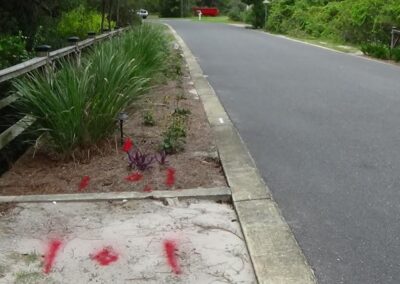Utility damage prevention is essential for the safety of workers, the public, and for maintaining the reliability of essential services. Subsurface utilities—including power, telecommunications, fiber optics, natural gas, and water lines—require careful locating and protection before any excavation or construction activity to avoid accidental strikes. Using advanced technology and adhering to national guidelines, Southland Utility Services’ Underground Utility Locating Department is committed to safe and accurate utility locating to protect both infrastructure and communities.
Utility Locating Services Explained
Utility locating involves a range of specialized services to detect and mark underground utilities accurately. Here’s an overview of what’s included:
- Power Line Locating: Detects underground power lines to reduce the risk of electrical hazards on site.
- Telecommunications and CATV Locating: Locates telecommunications and cable TV lines, which are critical for communication services.
- Fiber Optic Locating: Identifies fiber optic cables to protect high-speed communication networks from accidental damage.
- Natural Gas Line Locating: Ensures safe detection of gas lines to prevent dangerous leaks or accidents during excavation.
- Water and Sewer System Locating: Tracks traceable underground water and sewer lines for safe and compliant digging.
- Ground Penetrating Radar (GPR): Utilizes radar to locate non-metallic and metallic utilities, offering more precise and thorough mapping for complex sites.
Our Approach to Accurate and Safe Utility Locating
Our Damage Prevention Specialists use specialized locating devices that apply an electromagnetic signal to identify utilities accurately. Following the A.P.W.A. Recommended Marking Guidelines, our team marks utility lines using a standardized color code for quick identification, supporting clear communication on construction sites.
Utility locating requires specialized training to ensure precision and adherence to regulatory standards. Our Damage Prevention Specialists complete annual testing and recertification, staying up-to-date on Sunshine 811 and Alabama One-Call requirements. This training includes knowledge of state-specific regulations, best practices for excavation safety, and advanced utility locating techniques, which collectively ensure that every locate is conducted safely and in compliance with industry standards.
Recommended Steps for Preventing Utility Damage
To minimize the risk of utility damage during excavation, following these key practices is essential:
- Always Request a Locate Before Digging: Submitting a locate request through Sunshine 811 or your state’s equivalent ensures that all subsurface utilities are identified and marked before work begins. https://sunshine811.com/.
- Observe Marking Guidelines: Recognize and respect marking colors, which indicate different utility types (e.g., red for electric, blue for water). These markings are essential for identifying utility locations.
- Keep a Safe Distance: Excavation should be performed at a safe distance from the marked lines. Manual digging near marked utilities is recommended to prevent accidental strikes.
- Monitor for Unexpected Utilities: If unmarked utilities are encountered, stop excavation and contact the locating service provider for further assessment.
- Maintain Clear Communication: Regular communication between site crews and utility locators helps to clarify where utilities are marked and provides additional safety assurance.





